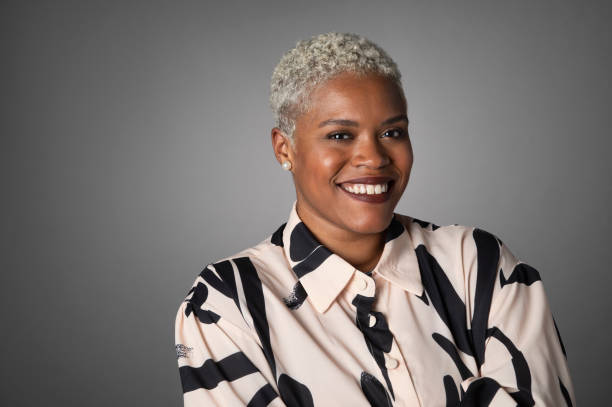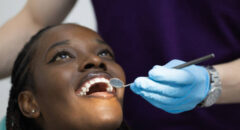
If you have Plaque Psoriasis (PsO), you probably already know that it is an autoimmune, inflammatory disease that causes skin cells to shed quickly, leaving behind thick, scaly, white plaques that can be itchy, red, or painful. These spots most often appear on the knees, elbows, and head.
Lesions on the head caused by PsO can be especially upsetting because they can make it hard to keep clean, look good, and feel confident. There’s also the fact that these sores are hard to treat, hurt, and even bleed.
A lot of people are talking about how daily hairstyles affect PsO head patches. Does your hair’s style, color, and length affect how you take care of, maintain, and stop scalp sores from returning? Wait, don’t shave your head yet. Let’s talk about it.
How Can Short Hair Help Scalp Psoriasis?
Different people can affect head PsO differently based on their hair length. There isn’t a clear answer to whether short hair is better for head PsO, but it may be easier to handle and simplify some parts of the treatment. How to do it:
- Treating head problems is easier and more effective when hair is shorter. This includes using medicinal shampoos, skin creams, and other recommended or alternative therapies.
- Visibility: Hair that is cut shorter makes it easier to see the head and keep an eye on sores. This might make it easier for doctors to get a better picture of their patients, which could lead to better treatments.
- Exposure to air: Shorter hair covers less of the scalp and lets more airflow over it, keeping scalp plaques from getting worse.
- Maintenance is lower because shorter hair is usually easier to wash and care for. It usually doesn’t take as long and doesn’t need as many shampoos, stylers, or medicines for hair PsO. Shorter hairstyles also make it easier to clean the head, so there is less dead skin and other debris build up.
Some people may be able to deal with their PsO plaques better with shorter hair, but it might not work for everyone. As your hair grows longer, you might not notice a change in how bad the spots on your head are.
RELATED: Scalp Psoriasis: 5 Ways to Prepare For a Salon Appointment
Haircuts With Scalp Psoriasis
Getting a professional haircut may be anxiety-provoking if you have PsO plaques on your scalp, but here are some great tips:
- Don’t forget that you’re not alone: The National Psoriasis Foundation says that up to 56 percent of people who have psoriasis have sores on their skin. There’s a good chance that you’re not their first client with this skin problem.
- Look for a stylist with experience: It can be helpful to find someone who knows about PsO and head sores. If you don’t have any other option, using them is a good idea, even if they don’t know the facts. Tell them it’s not contagious first since that’s probably what they want to hear.
- Talk: Before your hairdresser starts, let them know if your skin PsO makes you allergic to chemicals or heat. Make a plan to avoid or use these less while you’re together.
- Give us your favorite products: Pack your best PsO head care items for the meeting. This makes it easy to tell your stylist what you use; they might even be able to do a full treatment for you while you’re there.
Tips For Hair Maintenance
There are PsO patches on your head. To clean it gently, choose products that don’t have any dyes or colors and are made for people with sensitive skin. You might also need a mix of medicinal and sensitive items. It may take a few tries, but many people with scalp PsO can find a routine that works for them and their way of life.
Avoid Harsh Chemicals
If possible, try not to use chemicals on your hair, especially near your head. If you have to touch up your roots every month, look for healthy products that use hemp or veggie dyes.
Also, try to find goods that have more sodium, potassium, and ammonium sulfates because they are usually less annoying. Stay away from items that contain alcohol because they can dry out your head and make PsO patches worse.
Reduce Heat
Koebner’s phenomenon, in which PsO patches form after skin or head injuries, can be caused by heat on the scalp. If you can let your hair dry naturally, that’s best. If you can’t, use low heat settings on all of your hot tools, especially blow dryers, flat irons, curling irons, and straighteners.
If your hot tool has a “cool shot” button, you can also use it, especially when you’re close to your roots and head.
Be Careful Of Injury
Any damage to the skin can make PsO worse or irritate it. Remember this when you use brushes, trimmers, or blades on your head.
Tips For Hair Styling
When it comes to scalp PsO, style can make a difference. You probably already know that a low ponytail can hide plaques on the nape of the neck, and side-swept bangs can hide plaques on the forehead if you have them on your head.
Sideburns, or pulling your hair back in front of your ears, can also hide bumps and sores around your ears and neckline. Taking that ponytail out of your face can also help ease the pain of head PsO patches.
If you need glasses to read or see, try contact lenses first if you can. The skin behind your ears is connected to the skin on your head. Plaques can get worse in this area because of the pressure from glasses.
Remember to protect yourself from the sun when you’re getting dressed. Hats, hoods, and shields work well as barriers. Another option is to use sunscreen made just for your head and hair. These products will protect you from dangerous ultraviolet (UV) rays.
People Of Color & Scalp PsO
Plaque psoriasis can present differently across different ethnic groups.
For example, a 2022 review finds that people with darker skin tones can experience thicker plaques and larger surface areas of impacted skin. Additionally, nonwhite groups have reported lower quality of life as a result of these clinical differences.
If you have a darker skin tone and have PsO that affects your scalp, here are some tips that might help:
- Find a groomer who is good at what they do: It’s very helpful to talk to someone who knows about PsO and how to take care of your hair type. You should know that the care you need to take for PsO skin patches can sometimes hurt your hair, so keep that in mind.
- Do not use relaxers: Try to stay away from strong chemicals, especially when you put them on your hair. It is known that these can irritate the skin, which can make PsO patches worse.
- Ask for other options: Talk to your medical team or doctor about your choices. For instance, if you don’t wash your hair every day, every other day, or once a week, ask them to think of other ways to treat your hair besides shampoo.
- To keep your scalp moist, use hair oils made for the head as much as possible. It might seem fine to use oils that aren’t made for hair or skin, but they can hurt hair and make the problem even worse.
- Cut down on friction: When you sleep, you might want to use a sleep cap and/or a satin sheet.
- Use a free style: Think openly and gently when styling. Avoid tight bands and twists and give your hair a break whenever you can.
- Look into other choices: If the PsO patches on your head can’t be managed and you can’t let your hair rest, you might want to think about getting a wig or hair extensions. These choices are the least likely to pull or tug and are pretty easy on the head and hair.
- Follow other people who support PsO: social media is a great spot to get help. Alicia M. Bridges does a great job of speaking up for this neighborhood. Also, check out this list of other amazing women who fight for justice!
A well-established routine for scalp care is the best way to manage scalp PsO. If you’re still struggling to manage your scalp PsO, consult a dermatologist or healthcare professional to review your treatment options.








